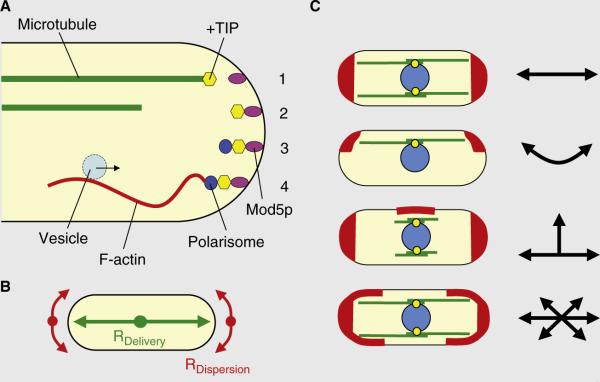Figure 3.
Cell-shape formation in fission yeast.
(A) A scheme of microtubule plus ends delivering polarity factors to the cell tip. The microtubule plus end delivers the +TIP complex carrying the Tea1p–Tea4p complex to the tip of the cell (1), where it is docked on the Mod5p receptor (2). The Tea1p–Tea4p complex recruits the polarisome complex containing Bud6p and For3p (3). For3p nucleates F-actin cables, which serve as tracks for the vesicular transport of the growth machinery to the cell tip (4). (B) A model for how the balance between the rate of delivery (RDelivery) and rate of dispersion (RDispersion) of polarity factors defines cell shape. (C) Consequences of changes in the delivery of polarity factors (i.e., RDelivery) or changes in the dispersion of polarity factors (i.e., RDispersion) on cell shape. When RDelivery is equal or greater than RDispersion, cells maintain linear growth. When RDelivery and RDispersion are displaced from the cell long axis, cells grow bent. When RDelivery does not reach the old cell tips, new cell tips are initiated and cells grow T-shaped. Finally, when RDelivery is less than RDispersion, cells grow oval or round.

